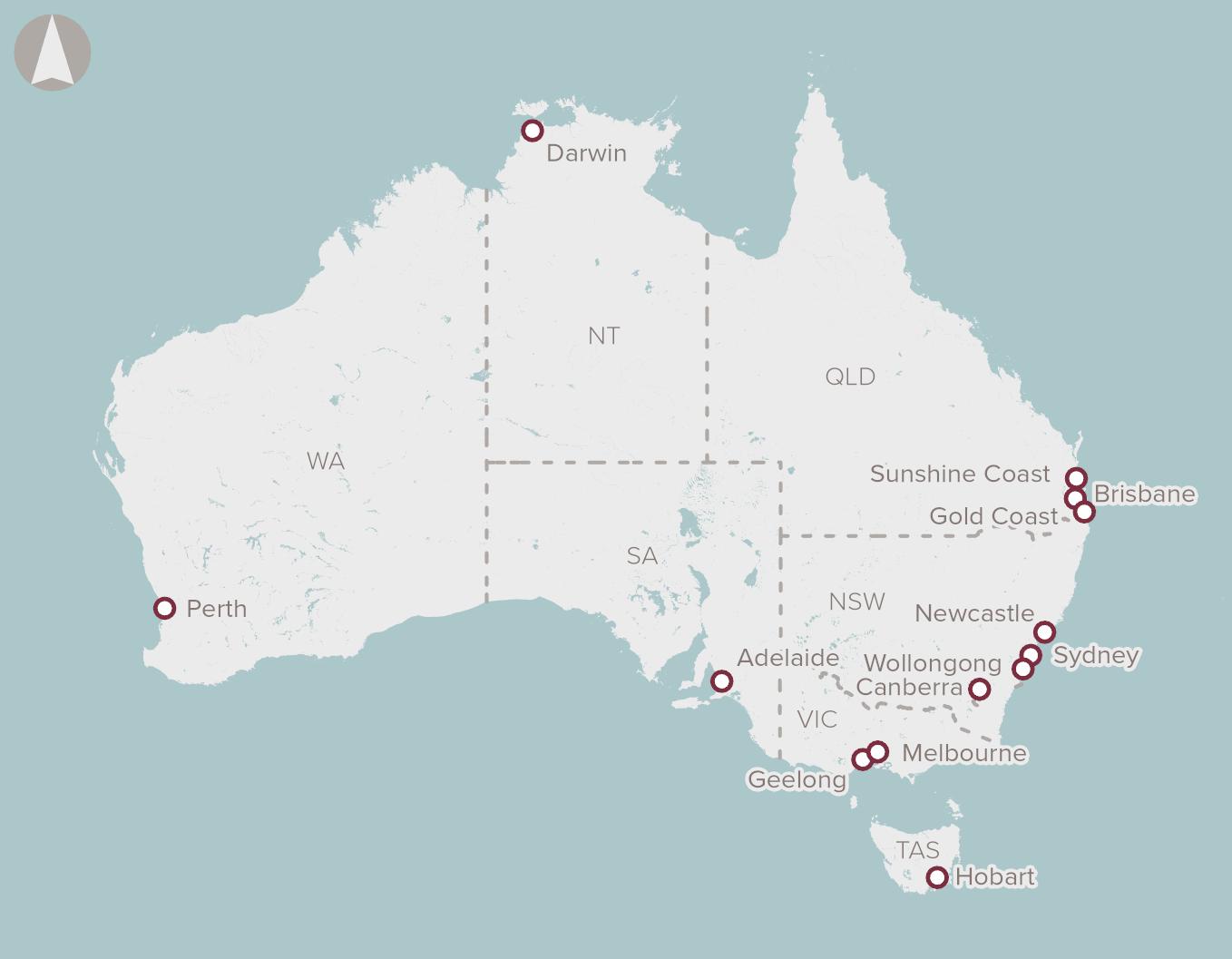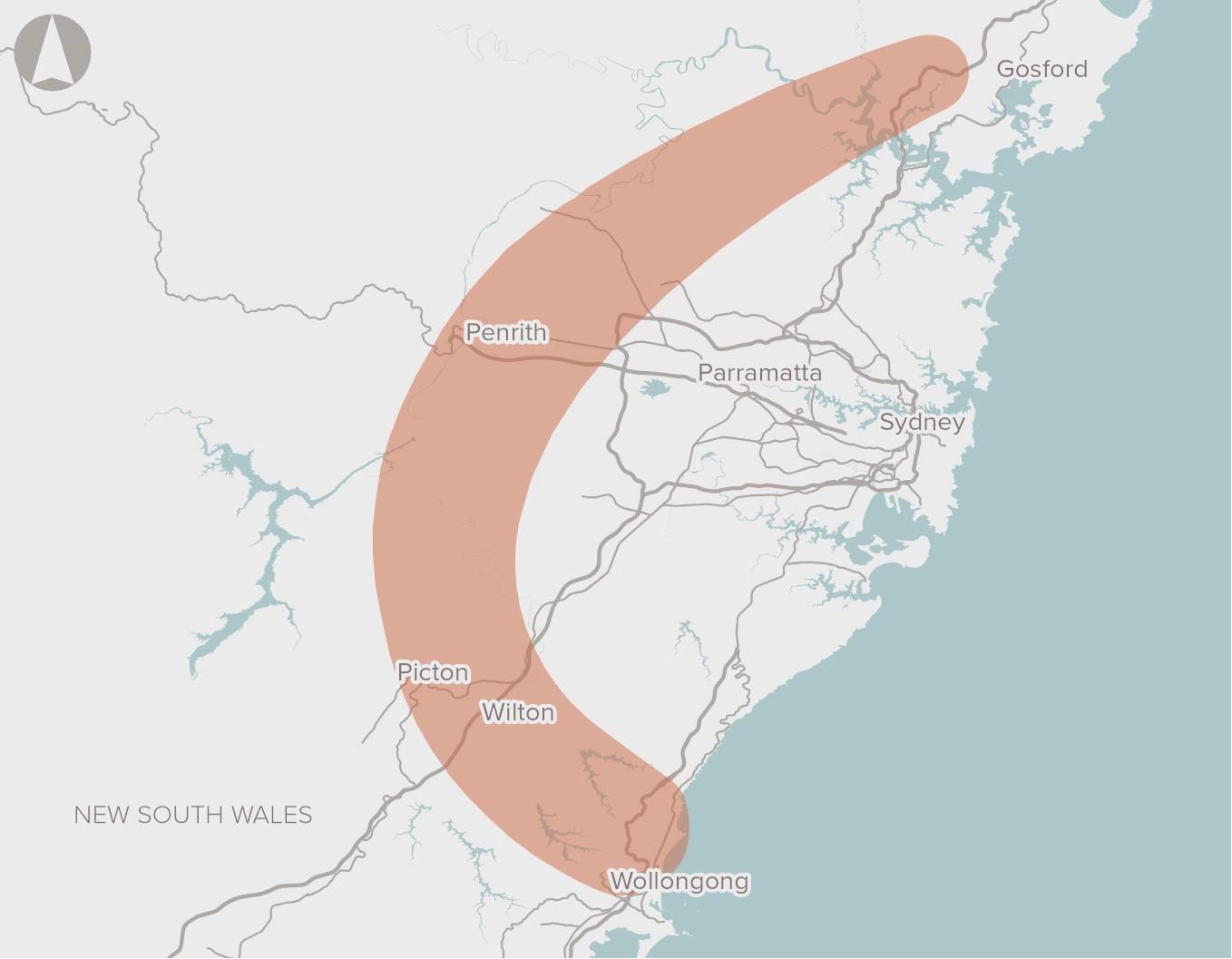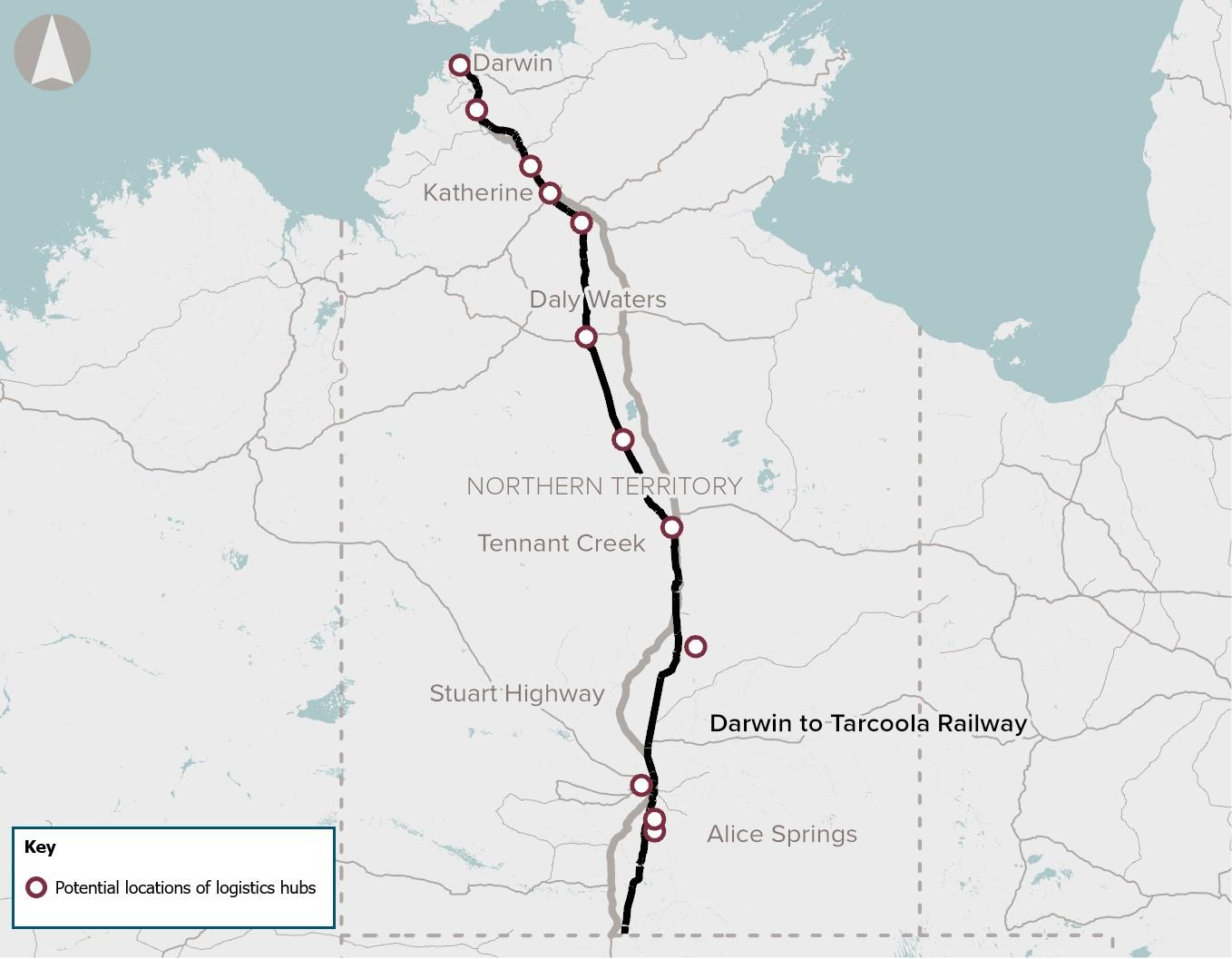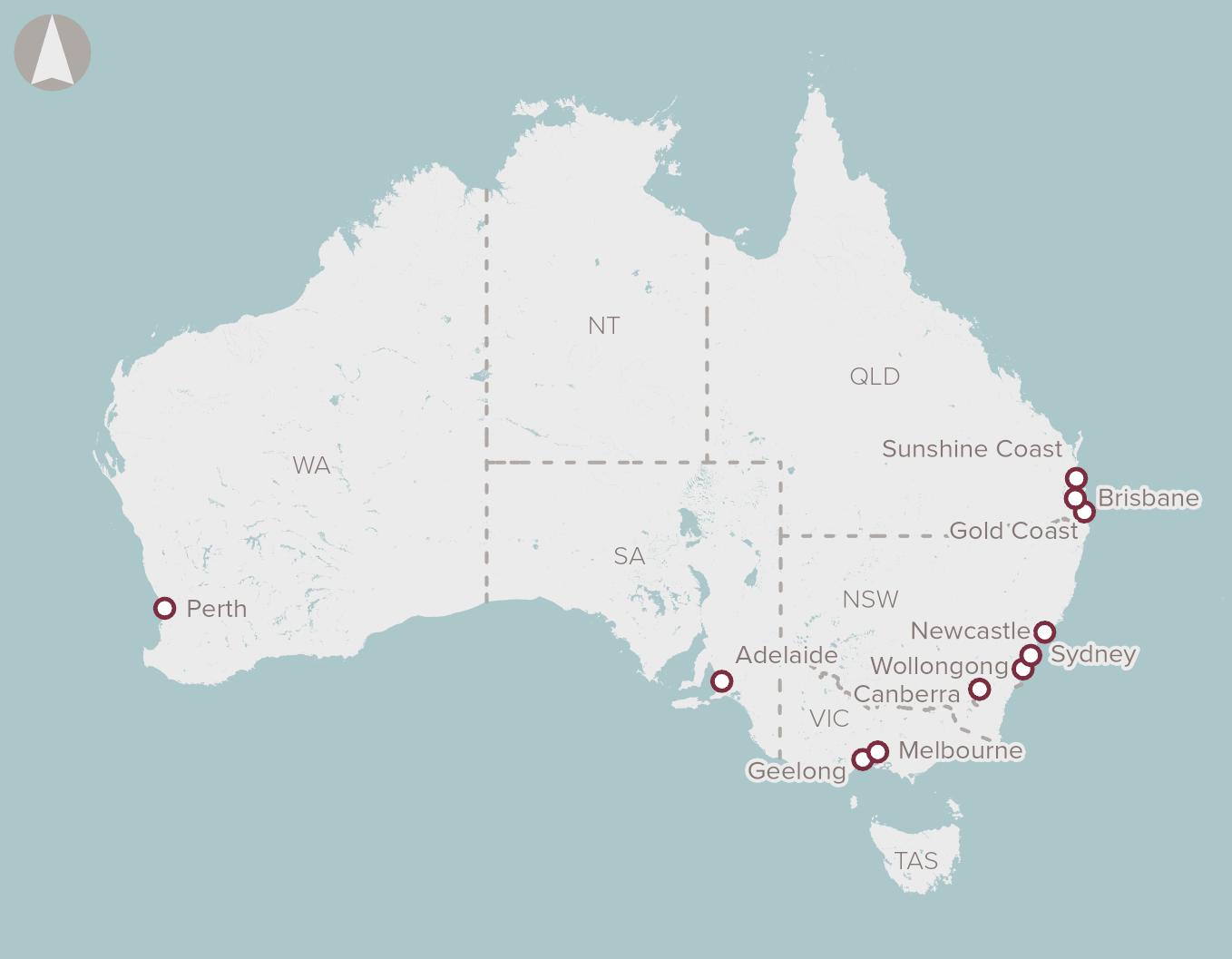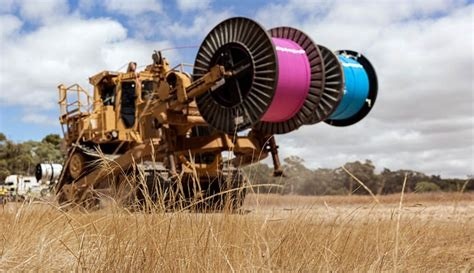Chart Color Schemes
est. as @ -- *
ABS ERP | -- people | --
2021 Census | -- people
Sales Activity
Curious about local property values? Filter the chart to assess the volume and appreciation (including resales) trends and regional comparisons, or scroll to the map below view this information at an individual property level.
Find a Recent Sale
Sales Detail
Population
Driver is positioned among the lower quartile of areas assessed nationally for population growth based on AreaSearch's assessment of recent, and medium term trends
Driver's population was around 2,894 as of August 2025. This showed an increase of 147 people since the 2021 Census, which reported a population of 2,747. The change was inferred from ABS estimated resident population of 2,894 in June 2024 and address validation from Census date. Population density was 1,682 persons per square kilometer, above national averages according to AreaSearch's assessment. Overseas migration contributed approximately 55.1% of recent population gains.
AreaSearch uses ABS/Geoscience Australia projections for each SA2 area, released in 2024 with a base year of 2022. For areas not covered by this data and post-2032 growth estimation, AreaSearch applies age cohort growth rates provided by ABS Greater Capital Region projections (released in 2023, based on 2022 data). Future population dynamics project an above median growth, with the area expected to expand by 386 persons to 2041, reflecting a 13.3% increase over 17 years.
Frequently Asked Questions - Population
Development
The level of residential development activity in Driver is very low in comparison to the average area assessed nationally by AreaSearch
Driver has seen approximately one new home approved annually. Development approval data is produced by the ABS on a financial year basis, showing seven homes approved over the past five financial years, from FY20 to FY25, with zero approvals so far in FY26. The population has been declining recently, suggesting that new supply may be keeping up with demand, offering good choice to buyers. New dwellings are developed at an average expected construction cost of $799,000, indicating that developers target the premium market segment with higher-end properties.
There have also been $1.2 million in commercial approvals this financial year, suggesting minimal commercial development activity. Compared to Greater Darwin, Driver shows substantially reduced construction levels, 94.0% below the regional average per person. This constrained new construction typically reinforces demand and pricing for existing dwellings. This level is also under the national average, indicating the area's established nature and potential planning limitations. New construction has been entirely comprised of standalone homes, preserving Driver's suburban nature with an emphasis on detached housing that attracts space-seeking buyers.
Interestingly, developers are building more traditional houses than the current mix suggests at Census (66.0%), indicating continued strong demand for family homes. The location has approximately zero people per dwelling approval, indicating a low density market. Looking ahead to 2041, Driver is expected to grow by 386 residents. If current construction levels persist, housing supply could lag population growth, likely intensifying buyer competition and underpinning price growth.
Frequently Asked Questions - Development
Infrastructure
Driver has limited levels of nearby infrastructure activity, ranking in the 10thth percentile nationally
Changes in local infrastructure, major projects, and planning initiatives significantly impact an area's performance. AreaSearch has identified 0 projects that could affect this region. Notable projects include Hudson Creek Power Station, Marine Industry Park, Darwin Corporate Park, Royal Darwin Hospital (RDH) Mental Health Inpatient Unit upgrades, and CSSD improvements. The following list highlights those most relevant.
Professional plan users can use the search below to filter and access additional projects.
INFRASTRUCTURE SEARCH
Frequently Asked Questions - Infrastructure
Royal Darwin Hospital (RDH) Mental Health Inpatient Unit and CSSD upgrades
Three-storey mental health facility on the RDH campus delivering 24 beds (18 inpatient + 6-bed Stabilisation Assessment and Referral Area) connected to the Emergency Department by an enclosed elevated walkway, plus upgrades to the Central Services Sterilisation Department. Managing Contractor: Sitzler. Architects: Ashford Architects (now Ashford Lamaya). Construction commenced 2023 and is tracking toward completion in 2025.
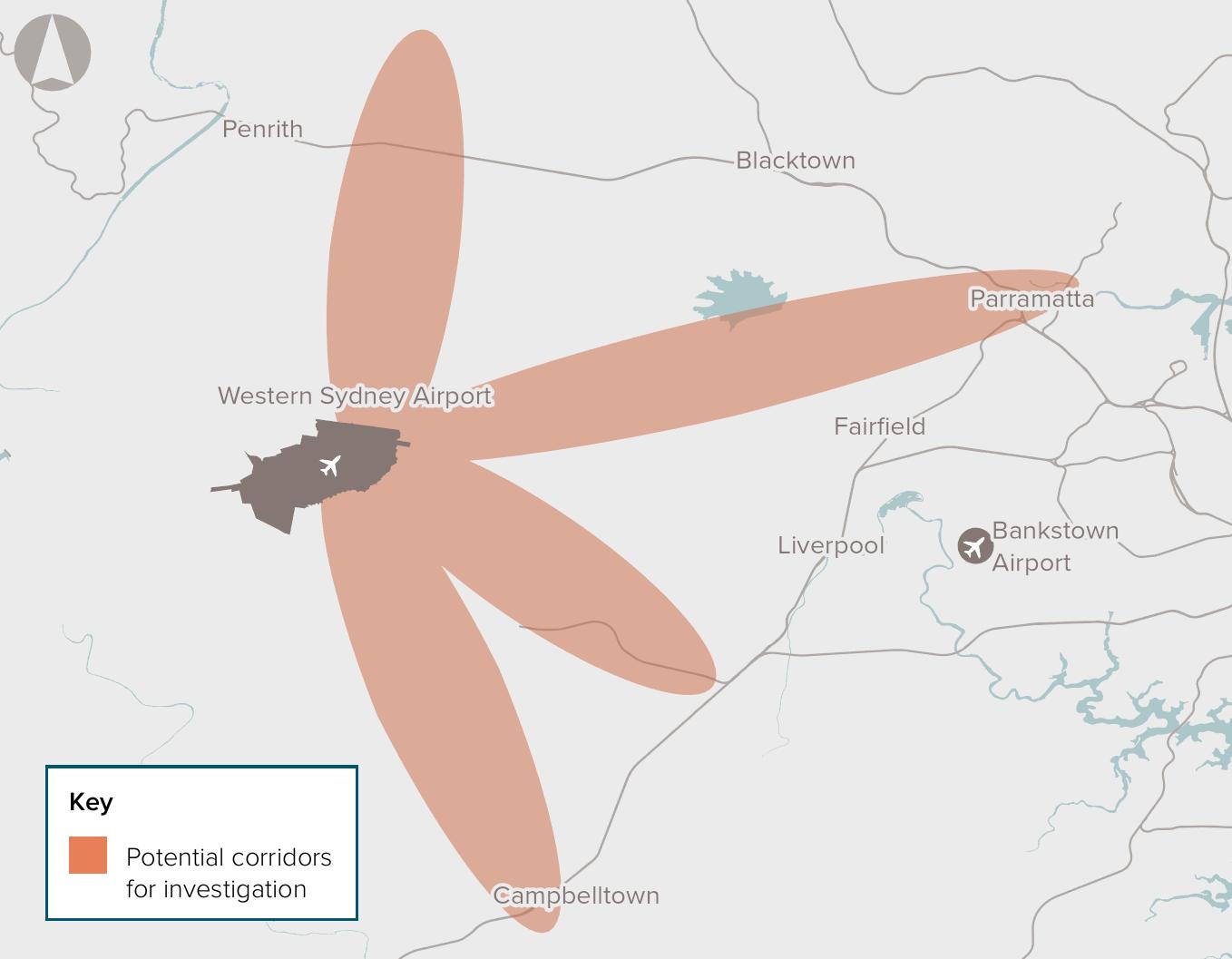
John Stokes Square Redevelopment
The Nightcliff area in Northern Territory is undergoing redevelopment, with works in the John Stokes Square already underway. The redevelopment will feature a 24 Hour Police Station, specifically designed public housing including for seniors and people living with disabilities, a pedestrian-friendly link between the Nightcliff Village and Nightcliff Shopping Centre, open space and the expansion of local services. The construction of these important amenities will create more than 250 local jobs over the lifetime of the project.
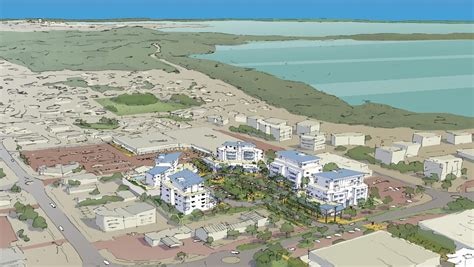
Enabling Digital Health Services for Regional and Remote Australia
National initiative to expand and improve digital health access for people in regional and remote Australia. Focus areas include enabling telehealth and virtual care, upgrading clinical systems and connectivity, supporting secure information exchange, and building workforce capability in digital health, aligned with the Australian Government's Digital Health Blueprint and Action Plan 2023-2033.
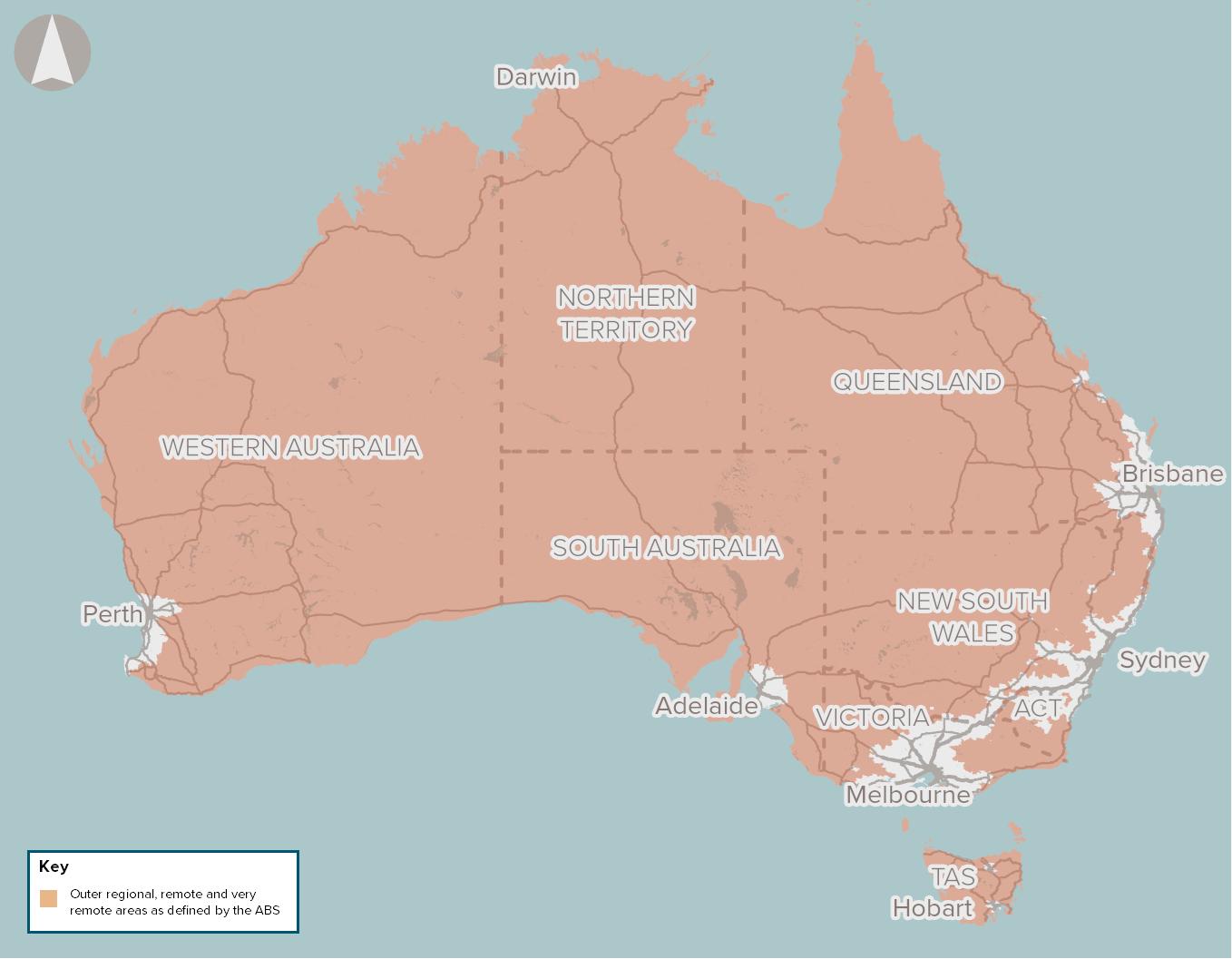
Desert Springs Octopus Renewable Energy Program
Majority Indigenous-owned developer pursuing a near-term pipeline of grid-connected solar and battery projects along the Darwin-Katherine Electricity System, with potential to expand into wind and green hydrogen. Partnership includes Octopus Australia with Larrakia Nation and Jawoyn Association to deliver utility-scale renewable energy and community benefit sharing.
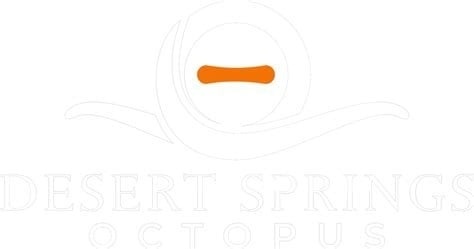
National EV Charging Network (Highway Fast Charging)
Partnership between the Australian Government and NRMA to deliver a backbone EV fast charging network on national highways. Program funds and co-funds 117 DC fast charging sites at roughly 150 km intervals to connect all capital cities and regional routes, reducing range anxiety and supporting EV uptake.
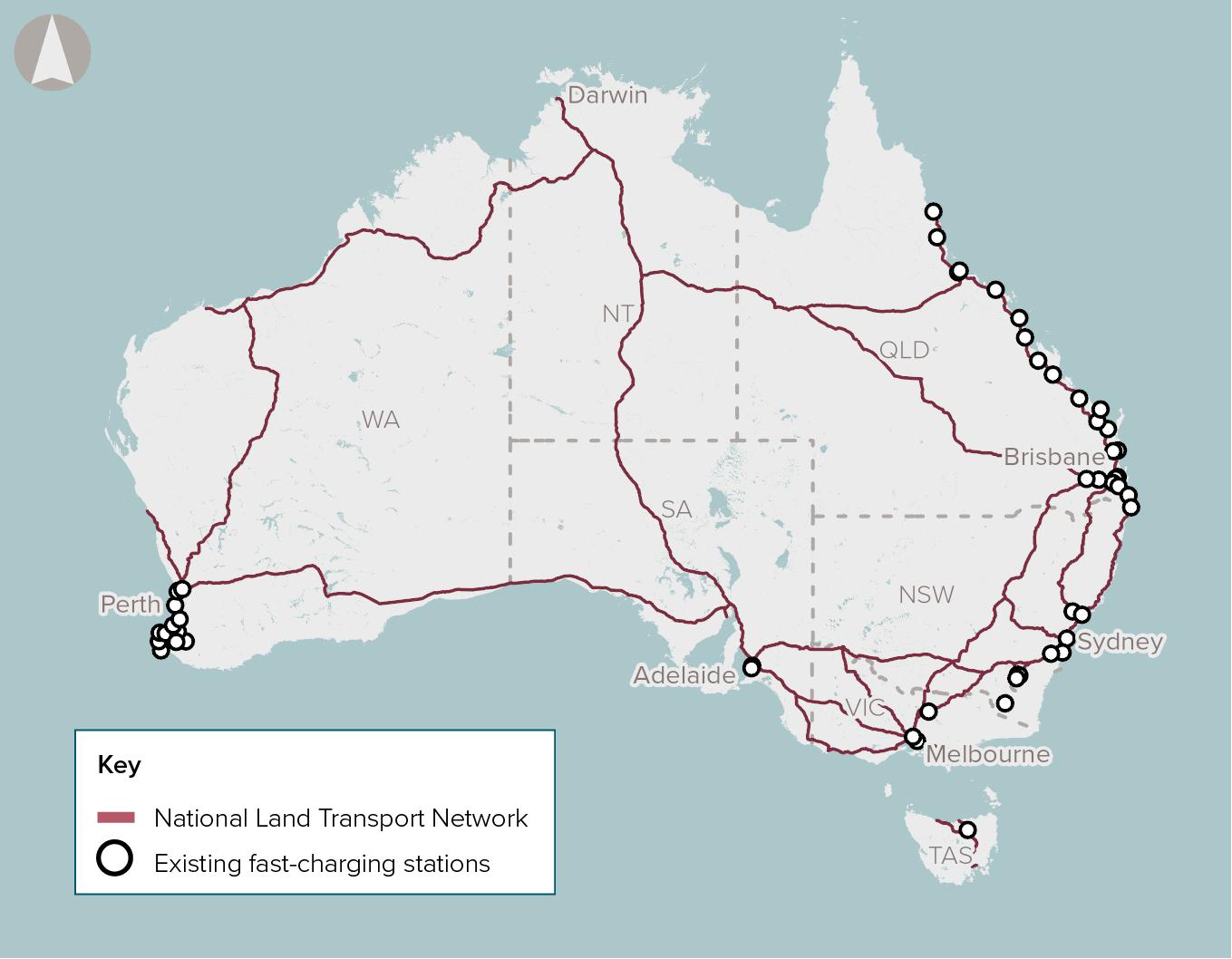
Hudson Creek Power Station
12MW natural gas-fired power plant, NT's first privately owned grid-connected gas generation facility. Features 25% lower emissions than average NT gas generators. Part of dual project with Batchelor Solar Farm, creating 162 construction jobs and providing vital grid stability to Darwin-Katherine network.
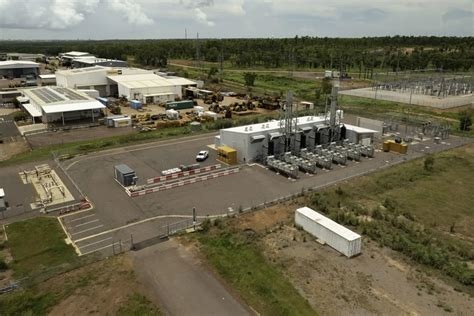
Marine Industry Park
Marine and offshore industries servicing hub at East Arm, Darwin. Stage 1 planning approval is secured for a purpose-built industrial subdivision near the new Darwin Ship Lift, with expressions of interest open for serviced lots. Existing common-user facilities include an all-tide barge ramp (first point of entry) and a secure hardstand supporting storage and fabrication activities.
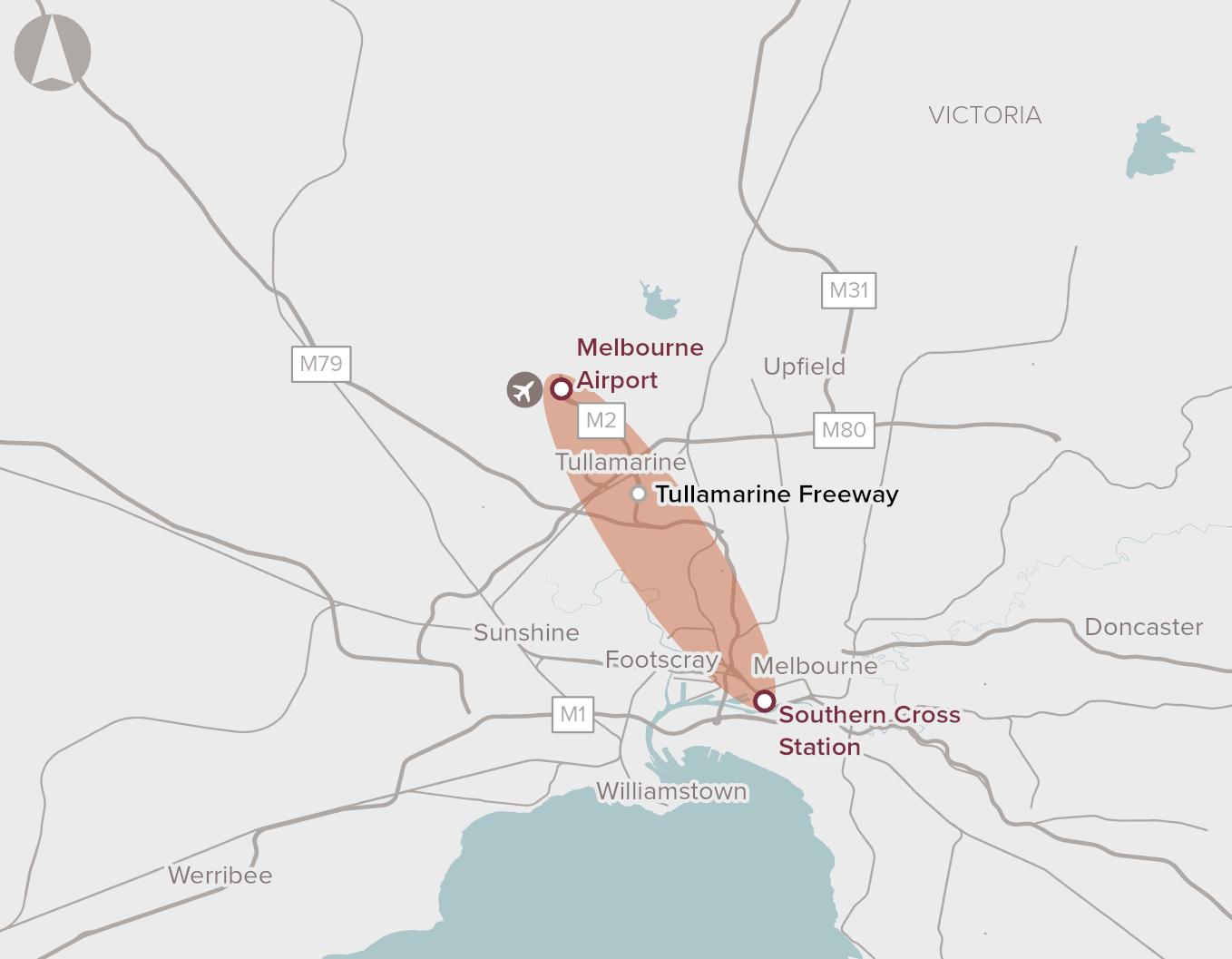
Darwin Renewable Energy Hub
Northern Territory Government proposal to co-locate up to six utility-scale solar farms (total 180-210 MW) with a battery energy storage system on 940 ha of Crown Land west of Finn Road, feeding the Darwin-Katherine grid. Site identified for industry in regional land use plans; consultation held to February 28, 2025 and environmental assessment processes are underway.

Employment
Employment conditions in Driver remain below the national average according to AreaSearch analysis
The Driver area has a skilled workforce with an unemployment rate of 4.9% as of the past year. This figure is estimated to have grown by 3.1%.
As of June 2025, there are 1,625 residents employed, with an unemployment rate of 6.7%, compared to Greater Darwin's rate of 3.0%. The workforce participation rate in Driver is similar to that of Greater Darwin at 69.7%. The leading employment industries among residents include public administration & safety, health care & social assistance, and construction. Construction has a particularly high presence with an employment share of 1.3 times the regional level.
However, public administration & safety has limited representation with only 16.0% employment compared to 19.5% regionally. The area appears to offer limited local employment opportunities based on Census data comparisons between working population and resident population. Over the past year ending June 2025, Driver's employment increased by 3.1%, while labour force grew by 3.0%, causing unemployment to fall slightly. In comparison, Greater Darwin recorded similar growth rates for employment and labour force, with a marginal decrease in unemployment. State-wide data from Sep-25 shows that NT employment grew by 1.0% year-on-year, adding 1,710 jobs, with an unemployment rate of 4.2%. This compares favourably to the national unemployment rate of 4.5%, with the state's employment growth outpacing the national average of 0.26%. National employment forecasts from Jobs and Skills Australia indicate a projected increase of 6.6% over five years and 13.7% over ten years. Applying these projections to Driver's employment mix suggests local growth could be approximately 6.2% over five years and 12.8% over ten years, though these are simple extrapolations for illustrative purposes only.
Frequently Asked Questions - Employment
Income
Income metrics indicate excellent economic conditions, with the area achieving higher performance than 75% of national locations assessed by AreaSearch
Driver's median income among taxpayers was $69,603 in financial year 2022. The average income stood at $76,917 during the same period. In comparison, Greater Darwin's median and average incomes were $65,522 and $75,260 respectively. As of March 2025, current estimates suggest a median income of approximately $76,870 and an average income of around $84,947, based on Wage Price Index growth of 10.44% since financial year 2022. According to Census 2021 income data, individual earnings stood out at the 80th percentile nationally with a weekly figure of $1,011. In Driver's area, 37.3% of residents (1,079 people) fell within the $1,500 - $2,999 income bracket, which was slightly higher than the surrounding region's 36.7%. High housing costs consumed 17.4% of income in Driver's area. Despite this, strong earnings placed disposable income at the 62nd percentile nationally.
Frequently Asked Questions - Income
Housing
Driver displays a diverse mix of dwelling types, with above-average rates of outright home ownership
In Driver, as per the latest Census evaluation, 66.1% of dwellings were houses while 33.8% were other types such as semi-detached homes, apartments, and 'other' dwellings. In comparison, Darwin metropolitan area had 75.9% houses and 24.0% other dwellings. Home ownership in Driver stood at 12.7%, with mortgaged dwellings at 39.7% and rented ones at 47.6%. The median monthly mortgage repayment was $1,950, lower than Darwin metro's $2,037, while the median weekly rent was $350 compared to Darwin metro's $400. Nationally, Driver's mortgage repayments were higher than Australia's average of $1,863, with rents being less than the national figure of $375.
Frequently Asked Questions - Housing
Household Composition
Driver features high concentrations of group households, with a lower-than-average median household size
Family households account for 73.6% of all households, including 30.9% couples with children, 25.7% couples without children, and 16.2% single parent families. Non-family households constitute the remaining 26.4%, with lone person households at 21.0% and group households comprising 5.3%. The median household size is 2.7 people, smaller than the Greater Darwin average of 2.8.
Frequently Asked Questions - Households
Local Schools & Education
Educational outcomes in Driver fall within the lower quartile nationally, indicating opportunities for improvement in qualification attainment
Educational qualifications in Driver trail region: 23.4% of residents aged 15+ hold university degrees, compared to 31.3% in the SA4 region. This gap indicates potential for educational development and skills enhancement. Bachelor degrees are most prevalent at 15.4%, followed by postgraduate qualifications (4.8%) and graduate diplomas (3.2%). Trade and technical skills are prominent, with 42.1% of residents aged 15+ holding vocational credentials – advanced diplomas (9.4%) and certificates (32.7%).
Educational participation is high, with 35.8% of residents currently enrolled in formal education: 13.2% in primary, 8.2% in secondary, and 5.6% in tertiary education. Driver Primary School and Palmerston College serve the area, collectively educating 1,641 students. Driver has varied educational conditions across its regions. Educational provision is conventional, with one primary and one secondary institution each. The area functions as an education hub, offering 56.7 school places per 100 residents – significantly above the regional average of 14.7 – attracting students from nearby communities.
Frequently Asked Questions - Education
Schools Detail
Nearby Services & Amenities
Transport
Transport servicing is good compared to other areas nationally based on assessment of service frequency, route connectivity and accessibility
The analysis of public transportation in Driver shows that nine active transport stops are currently operating. These stops serve a mix of bus routes, with 21 individual routes providing service collectively resulting in 1044 weekly passenger trips. The accessibility of these transport services is rated as good, with residents typically located approximately 214 meters from the nearest stop.
On average, across all routes, there are about 149 trips per day, which translates to roughly 116 weekly trips per individual stop.
Frequently Asked Questions - Transport
Transport Stops Detail
Health
Driver's residents boast exceedingly positive health performance metrics with younger cohorts in particular seeing very low prevalence of common health conditions
Health outcomes data shows excellent results for Driver's younger cohorts with a notably low prevalence of common health conditions.
Approximately 58% of Driver's total population (1,672 people) have private health cover, indicating an exceptionally high rate. The most prevalent medical conditions in the area are mental health issues and asthma, affecting 7.7% and 7.3% of residents respectively. Notably, 75.1% of residents report being completely free of medical ailments, compared to 76.6% across Greater Darwin. Driver has a higher proportion of seniors aged 65 and over at 9.3%, with 269 people falling into this age bracket, compared to Greater Darwin's 7.5%. While health outcomes among seniors in Driver are above average, they require more attention than the broader population.
Frequently Asked Questions - Health
Cultural Diversity
Driver was found to be more culturally diverse than the vast majority of local markets in Australia, upon assessment of a range of language and cultural background related metrics
Driver had a higher cultural diversity than most local markets, with 25.7% of its population born overseas and 21.3% speaking a language other than English at home. Christianity was the dominant religion in Driver, comprising 39.0% of the population. However, there was an overrepresentation in Other religions, which made up 1.8% compared to 1.1% across Greater Darwin.
In terms of ancestry, the top three groups were Australian (25.2%), English (23.0%), and Other (10.8%). There were notable differences in the representation of certain ethnic groups: Filipino was overrepresented at 4.4% compared to 4.8% regionally, Australian Aboriginal at 10.1% compared to 9.1%, and Maori at 0.9% compared to 0.7%.
Frequently Asked Questions - Diversity
Age
Driver's young demographic places it in the bottom 15% of areas nationwide
At 33 years, Driver's median age is comparable to Greater Darwin's average of 34 and is substantially under Australia's median of 38. Relative to Greater Darwin, Driver has a higher concentration of residents aged 5-14 (16.2%) but fewer residents aged 15-24 (10.2%). Post-2021 Census data shows the 75-84 age group grew from 1.3% to 2.6%, while the 5-14 cohort increased from 15.1% to 16.2%. Conversely, the 15-24 cohort declined from 12.7% to 10.2%. Demographic modeling suggests Driver's age profile will evolve significantly by 2041. The 65-74 age cohort is projected to grow steadily, expanding by 78 people (44%) from 181 to 260. Notably, the combined 65+ age groups will account for 52% of total population growth, reflecting the area's aging demographic profile. Meanwhile, the 0-4 cohort grows by a modest 5% (11 people).
